AUTHOR of THE TRIUMPH of THE WORLD´s false ITALIAN CUISINE .. Maurizio PELLI
Posted on by Wine & Food Society
FETTUCCINE ALFREDO, SPAGHETTI BOLOGNAISE & CAESAR SALAD
Article By: Publisher & Journalist Margaux Cintrano
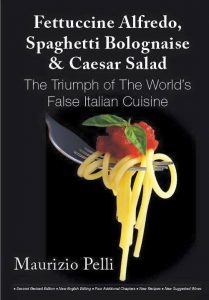 Margaux: Where were you born and raised ?
Margaux: Where were you born and raised ?
Maurizio: I was born in Arona, on Lago Maggiore in the Piedmont Region ..
Margaux: Who is Maurizio Pelli ?
Maurizio: I am a former businessman who has been retired in Dubai since 1999, and a frequent traveler to my home land, Italy for business and pleasure, I am presently a penning author, private chef and Italian Cuisine consultant for passion and pleasure.
Margaux: The Book: Fettucccine Alfredo, Spaghetti Bolognaise & Caesar Salad, The Triumph of the World´s False Italian Cuisine: Tell us, what or who inspired you to pen such an amazing book?
Maurizio: After travelling around the world for many decades, as a businessman, I was put into a position where I had to eat in the 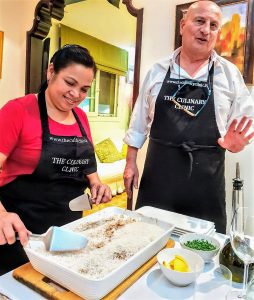 “supposed to be” Italian restaurants abroad. 99% of those restaurants are not Italian at all, and maybe they are Italian sounding to attract customers, however, surely not, what we consider authentic traditional Italian dishes and specialties. For this reason I wrote this book, dedicated to foreigners who like our cuisine but don’t know what is really authentic Italian cuisine and to defend my viewpoints from the aggression of forgers, falsifiers, and those mystifed by our wonderful cuisine, alimentary products and specialties. The book in paperback is in English only and not in Italian. The English paperback and all the E-Book versions and Kindle are in English and Italian and are available on: Amazon. Furthermore, The English paperback and all the E-Book versions including Kindle are also available in Italian and English on my website at a special
“supposed to be” Italian restaurants abroad. 99% of those restaurants are not Italian at all, and maybe they are Italian sounding to attract customers, however, surely not, what we consider authentic traditional Italian dishes and specialties. For this reason I wrote this book, dedicated to foreigners who like our cuisine but don’t know what is really authentic Italian cuisine and to defend my viewpoints from the aggression of forgers, falsifiers, and those mystifed by our wonderful cuisine, alimentary products and specialties. The book in paperback is in English only and not in Italian. The English paperback and all the E-Book versions and Kindle are in English and Italian and are available on: Amazon. Furthermore, The English paperback and all the E-Book versions including Kindle are also available in Italian and English on my website at a special 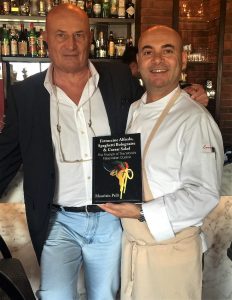 discount: www.the culinaryclinic.it .. Note, my new book to be published shortly, shall be on sale in the same manner.
discount: www.the culinaryclinic.it .. Note, my new book to be published shortly, shall be on sale in the same manner.
Margaux: With the goals to promote the true authentic classic Italian regional cuisines, you are an advisot to the Italian Cuisine World Summit in Dubai. Please tell us more about this ?
Maurizio: After winning the award for my book during the “Italian Cuisine World Summit” in 2013, I have become an active part of both the Summit and the “Italian Cuisine in the World Forum” and from 2014, I have been collaborating with these international organisations. Since 2017, I am amongst the founding members of the ICWF “Italian Cuisine World Foundation” in which we have asked Unesco for intangible heritage for Italian cuisine abroad during The Expo 2015 in Milan. This  has been the must quintessential starting point of the Italian cuisine promoting globally.
has been the must quintessential starting point of the Italian cuisine promoting globally.
Margaux: Tell us about your new book almost ready to be published ..
Maurizio: Unfortunately my new book is suffering a delay, and I hope it shall be on the market soon! It Is totally different from my 1st book- It’s about my ‘Dubai’s Deluxe Dinner Party’ as a Private chef in Dubai. The craziness, demanding and extravagant dinners of the elite cosmopolitan Dubai´s affluent and rich residents and expats. A behind-the-scenes vision of the hidden Dubai gastronomic oriented and passionate culinary dining custumers and their gourmand palates.
Margaux: What would you recommend to a young man or young woman who wanted to pursue a career in the culinary arts ?
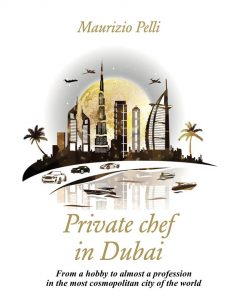 Maurizio: To be ready to demonstrate their personalities and learnt skills to date. To be authentic and not to follow fads or the fashion of the moment, and never ever copy somebody already famous but create your own style.
Maurizio: To be ready to demonstrate their personalities and learnt skills to date. To be authentic and not to follow fads or the fashion of the moment, and never ever copy somebody already famous but create your own style.
Margaux: It has been stated worldwide, that “we eat with our eyes” .. What are your viewpoints on the art of plating ? Do you have a style ? Which are your color preferences ? Which tools do you use ? What do you deem as necessary in a successfully presented plate ?
Maurizio: This, for me is a controversial viewpoint especially regarding Italian dishes. Our specialties have evolved from centuries ago and they have reached the beauty naturally without forced makeup. This does not mean that they can not be visually or more attractive as long as they do not overwhelm the soul of the dish. Especially regarding the 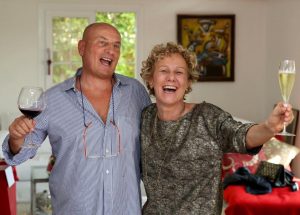 italian regional cuisine, as it is not possible to add something that is not territorially compatible. The plating already has changed in last few years, and the portions are smaller and more easy to plate with style. The favourite colours of our dishes are always, the ones of our national flag: red, white and green! I employ the same tools like any other chef: Forks, rings and sac a poche! Every plate is different, and successfully food designed plates to me are the ones which reach their beauty naturally by themselves, like a beautiful woman !
italian regional cuisine, as it is not possible to add something that is not territorially compatible. The plating already has changed in last few years, and the portions are smaller and more easy to plate with style. The favourite colours of our dishes are always, the ones of our national flag: red, white and green! I employ the same tools like any other chef: Forks, rings and sac a poche! Every plate is different, and successfully food designed plates to me are the ones which reach their beauty naturally by themselves, like a beautiful woman !
THE JEWELS of THREE MICHELIN starred CHEF JOAN ROCA ..
Posted on by Wine & Food Society
Article By: Publisher & Journalist Margaux Cintrano
Photo Copyright: Restaurant El Celler de Can Roca
The Executive Chef of El Celler de Can Roca, Joan Roca belongs to the generation of entreprennurial and visionary high end Chefs, that have gradually been turning the Iberian Peninsula, and specifically his birthplace, Girona one hour north of Barcelona, into a global epicurean shrine.
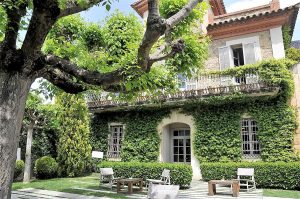 London Restaurant Magazine had awarded first place to El Celler de Can Roca, a Three Michelin Starred Restaurant for the World´s Best Restaurant in April 2013 for the first time.
London Restaurant Magazine had awarded first place to El Celler de Can Roca, a Three Michelin Starred Restaurant for the World´s Best Restaurant in April 2013 for the first time.
Chef Joan directs and manages the restaurant along with his two brothers, Master Sommelier Josep Roca and Executive Pastry Chef Jordi Roca and together, they have aimed to create an extraordinary epicurean experience for each and every diner.
The triology of Rocas, have long sought out unique culinary techniques and each with their own passion for exploring the links between aromas, perfumes, and flavors, almost as if they were sorcerers brewing ingredients for a spell.
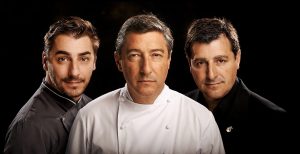 One example of this, is how Chef Joan has revitalised ancient ingredients such as edible metallic foil papers of gold, silver and copper, which are said to lower cholesterol and date back to The Persian Empire, in the 6th century.
One example of this, is how Chef Joan has revitalised ancient ingredients such as edible metallic foil papers of gold, silver and copper, which are said to lower cholesterol and date back to The Persian Empire, in the 6th century.
A visit to EL CELLER DE CAN ROCA, which is set in a stone manor townhouse nestled amongst lush micro climate herbal and historical gardens, requires a willingness to suspend the antiquated notion that eating is a fundamental of life, something we do in order to survive. There is little about a lunch or dinner at EL CELLER DE CAN ROCA that can be compared to any notion that we eat to live.
INTERVIEW WITH CHEF JOAN ROCA, FACE TO FACE ..
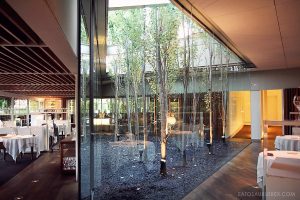 Margaux: While lots of restaurants can turn out a good meal or two, few can match the Roca Brothers and their colossal portfolio of of sublime finesse and wines. What has led to your success today.
Margaux: While lots of restaurants can turn out a good meal or two, few can match the Roca Brothers and their colossal portfolio of of sublime finesse and wines. What has led to your success today.
J.R. Firstly, our relocation in 2010, has definitely marked our turning point and furthermore, the merging of gastronomic traditions with Catalan and Mediterranean cuisines coupled with state of the art advanced technology.
Margaux: Please tell our readers, about your mentors?
J.R. Firstly, I worked with the late Chef Santi Santamaria in 1988. Then in 1989, I worked with Ferràn Adrià at the former El Bulli in Las Rosas, Girona. In 1992, I was doing another apprenticeship under the coaching of Three Michelin Star Chef, Georges Blanc in Vonnas, France. These internships were the keys to my inaugurating a new beginning as a Chef.
Margaux: Could you tell us about a preferred method of preparation that you employ?
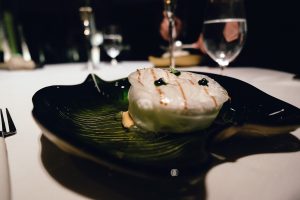 J.R. The Sous Vide, a process in French which denotes, “under vacuum”. It involves vacuum packing a food product in a plastic like baggie and cooking the food at a lower temperature than normal at an extended time and then, quickly cooling the food. The advantages are that the Chef or Home Gourmet receives less shrinkage of the raw materials and the product is moister, and higher volumes of food can be prepared much quicker. The method was originally used during The Persian Empire without the plastic however, enclosed and wrapped in textiles.
J.R. The Sous Vide, a process in French which denotes, “under vacuum”. It involves vacuum packing a food product in a plastic like baggie and cooking the food at a lower temperature than normal at an extended time and then, quickly cooling the food. The advantages are that the Chef or Home Gourmet receives less shrinkage of the raw materials and the product is moister, and higher volumes of food can be prepared much quicker. The method was originally used during The Persian Empire without the plastic however, enclosed and wrapped in textiles.
Margaux: I am aware that you had travelled several times to Japan.
J.R. Firstly, the Kai Seiki gastronomic route in Kyoto, has strongly influenced our art of plating. KAI means breast and SEIKI translates to pebbles or stones. Historical Kyoto has maintained its ancient gastronomic traditions which were started by Medieval Buddhist Monks who would carry servings of food in their pockets for long journies or be served platters of assorted types of rice, sashimi, marine pickles and Udon Noodles.
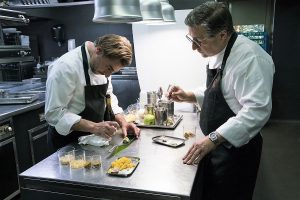 This has become Japan´s renovated evolutionary Tapas movement in the 21st century. To Clarify, ROCA in Spanish means STONE. Thus, when possible, the implementing of three stones, for the 3 Roca Brothers is utilised in plating up our dishes. Furthermore, we utilise a savory ingredient, a sweet, a semi sweet, a bitter, a sour and an aromatic in uncountable courses and starters. In France and at El Bulli, we had learnt to sprinkle, drizzle, to create foams of all textures and to handle the garnishing and dressing as if the porcelain were a canvas painting.
This has become Japan´s renovated evolutionary Tapas movement in the 21st century. To Clarify, ROCA in Spanish means STONE. Thus, when possible, the implementing of three stones, for the 3 Roca Brothers is utilised in plating up our dishes. Furthermore, we utilise a savory ingredient, a sweet, a semi sweet, a bitter, a sour and an aromatic in uncountable courses and starters. In France and at El Bulli, we had learnt to sprinkle, drizzle, to create foams of all textures and to handle the garnishing and dressing as if the porcelain were a canvas painting.
Margaux: Surrealism or the Provençal School of painting inspirations ?
J.R. Another great inspiration has always been the French Impressionists, Miró, Dali, Picasso and the Asian Schools of Painting, very much so.
Margaux: Gastronomic focused travel.
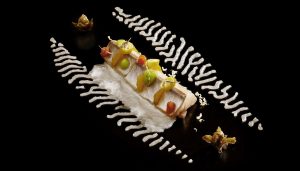 J.R. Since, we have travelled to Japan and China several times, and to Peru, Columbia and Mexico, in 2014, we are planning the rest of the Americas & Caribbean and The Nordic Countries between 2019 and 2020.
J.R. Since, we have travelled to Japan and China several times, and to Peru, Columbia and Mexico, in 2014, we are planning the rest of the Americas & Caribbean and The Nordic Countries between 2019 and 2020.
RIDING the crest of THE WAVES with THREE MICHELIN STARRED CHEF ÁNGEL LEÓN
Posted on by Wine & Food Society
By: Publisher Margaux Cintrano
Photo Copyright: Restaurant Aponiente, El Puerto de Santa Maria, Cádiz.
Riding the crest of the waves with a totally evolutionary vanguard cuisine offering an experience, he entitles “calm gastronomy” is one of a kind Chef Ángel León.
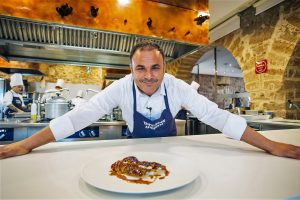 At his Puerto de Santa Maria Restaurant Aponiente, Chef Ángel has conjured up an epicurism with the enchantment of the world under the sea. He has proven himself a master investigator of Plankton, marine lettuces and algaes, which he filters in his own concoctions and gastronomic gadgets. Additionally, he is an expert in fish, shellfish and seafoods and their preparation. Furthermore, he invented Clarimax for clarifying liquid ingredients to create transparent consommés and utilises olive pits in place of carbon for braising, grilling an barbecuing on open flame.
At his Puerto de Santa Maria Restaurant Aponiente, Chef Ángel has conjured up an epicurism with the enchantment of the world under the sea. He has proven himself a master investigator of Plankton, marine lettuces and algaes, which he filters in his own concoctions and gastronomic gadgets. Additionally, he is an expert in fish, shellfish and seafoods and their preparation. Furthermore, he invented Clarimax for clarifying liquid ingredients to create transparent consommés and utilises olive pits in place of carbon for braising, grilling an barbecuing on open flame.
Chef León´s pure Andalucian hedonism has brought him uncountable awards at Madrid Fusion and on Canal Cocina T.V. His father, a medical doctor and researcher coupled with his medical doctor mother have instilled in him the investigative nature he possesses.
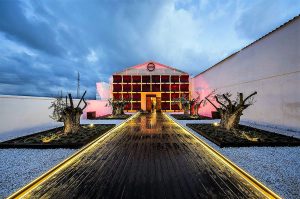 Back in 2010, his research project at the University of Cádiz derived in the development of the state of the art Clarimax, a kitchen machine constructed by JP SELECTA, in Barcelona. Whether coaching, cooking, or fishing, Chef Ángel is detailed oriented and a perfectionist. His inspiration, inventiveness and “the product” culinary philosophy has enabled him to dazzle diners with his dramatically provocative presentations at your table. His extraordinary vanguard culinary methodology, unique fresh sustainable or bio ingredients and his enrapturing touches from his home land all provide the most incredible dining experience one can ever have in Cádiz, Andalusia ..
Back in 2010, his research project at the University of Cádiz derived in the development of the state of the art Clarimax, a kitchen machine constructed by JP SELECTA, in Barcelona. Whether coaching, cooking, or fishing, Chef Ángel is detailed oriented and a perfectionist. His inspiration, inventiveness and “the product” culinary philosophy has enabled him to dazzle diners with his dramatically provocative presentations at your table. His extraordinary vanguard culinary methodology, unique fresh sustainable or bio ingredients and his enrapturing touches from his home land all provide the most incredible dining experience one can ever have in Cádiz, Andalusia ..
FACE TO FACE WITH CHEF ÁNGEL LEÓN ..
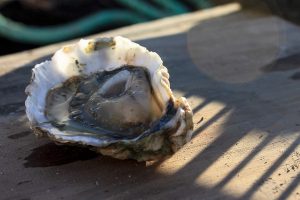 Margaux: Culinary Philosophy ?
Margaux: Culinary Philosophy ?
A.L. The product and no chemicals. I specialise in the natural.
Margaux: Who had been or were your mentors ?
A.L. The late Chef Joël Robuchon at the Three Michelin Star Restaurant L´ Atelier, Paris, where I worked for seven years and for three years, at La Casa de Templo, in Toledo where I was learning about the historic roots of Spanish Culture including the Sefardic Epicurism and the Moorish Arabic Cuisines.
Margaux: The Sea ?
A.L. I have always had an obsession with the sea and I enjoy fishing with my dad, cleaning, slicing and preparing fish, shellfish and seafoods of all types.
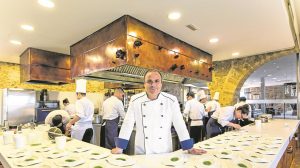 Margaux: Do you fish for your Restaurant Aponiente ?
Margaux: Do you fish for your Restaurant Aponiente ?
A.L. Yes I do, however, I am also very community minded and I coach crews on ships and small fishing vessels who are working for 15 Euros hourly. I have taken 30 day fishing excursions bringing in 50 tons of wild fresh fish. I have also wanted to mention, that have sourced fish in Cádiz for 4 Euros a kilo, and in The Madrid Capital, these species could sell for 20 to 40 Euros a kilo.
Margaux: I believe you would do quite well in politics ! What exactly are you doing with Plankton ?
A.L. Firstly, Plankton groves or plantations. I filter 17.000 litres of water. The Omega 3 content is the most numerous of all edible species and / or plant life. Plankton is the cellular origin of all.
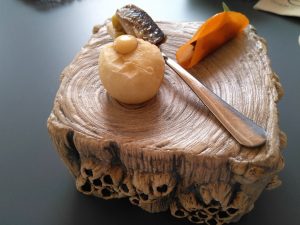 Margaux: Do you have any research investigation projects scheduled for 2019 – 2020 ?
Margaux: Do you have any research investigation projects scheduled for 2019 – 2020 ?
A.L. I have been in the process of a joint venture, in which we are collaborating on a baby foodline with a Japanese Manufacturer.
Margaux: And your dream trip ?
A.L. To lose myself in the Alaskan Arctic Coast on a boat.
Margaux: Tell us about one of your books.
A.L. My first book, MAR CONTRA CORRIENTE, which signifies THE SEA AGAINST THE CURRENT, was not a run of the mill recipe book. This is a book that came from passion and fully living up to the challenges of the title.
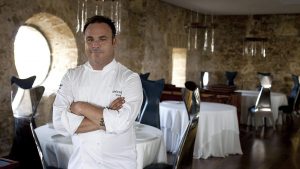 Margaux: Tell us about your 1st recipe ..
Margaux: Tell us about your 1st recipe ..
A.L. My first recipe prepared at home was a caramel custard dessert. My mother was livid with me about the tremendous mess I made in her kitchen. I was sort of a “Dennis the Menace” !
Margaux: Last but not least, music in the kitchen while working ?
Ángel: Yes, instrumental Jazz and instrumental Flamenco. “I am also a believer in the stillness, is the power” ..
Bulgarian WINE – a JOURNEY in THE TIME
Posted on by Wine & Food Society



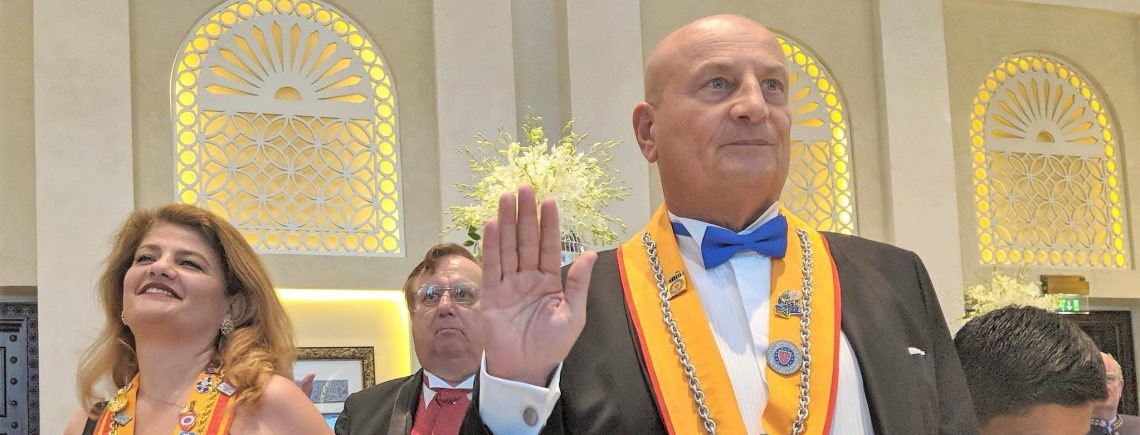

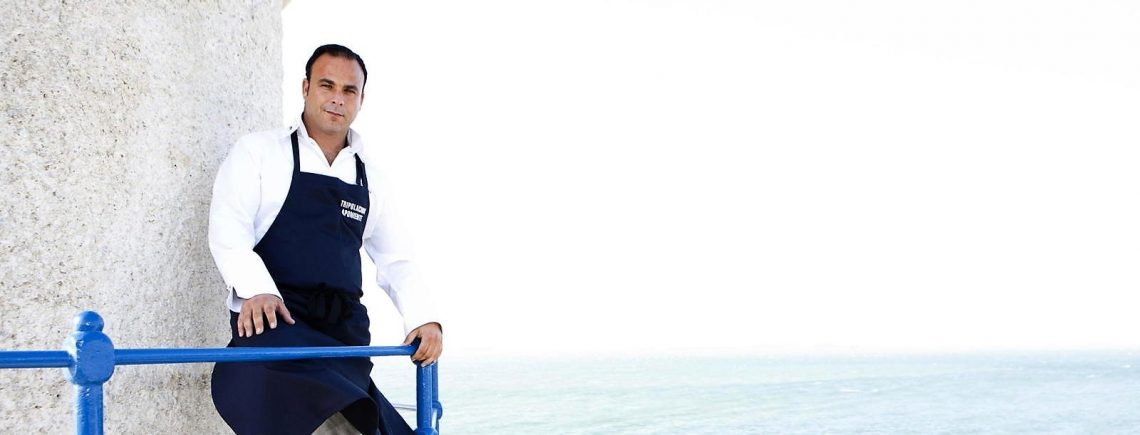
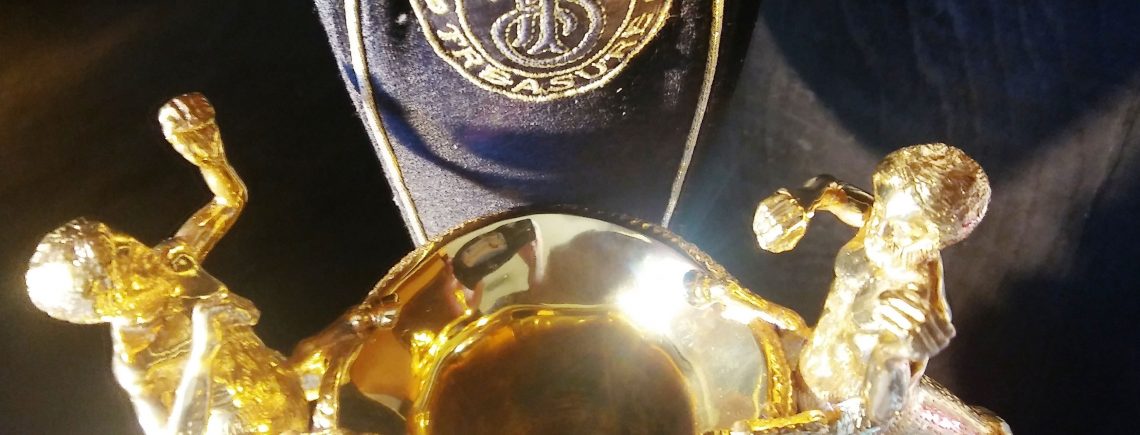
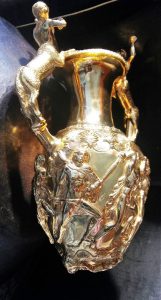
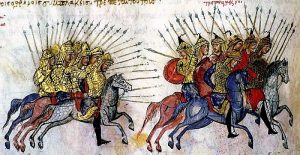
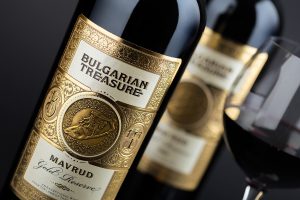
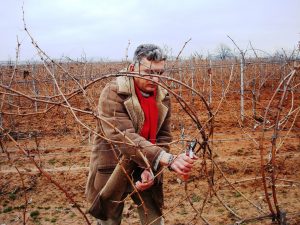
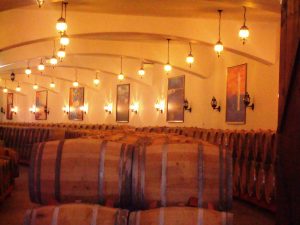
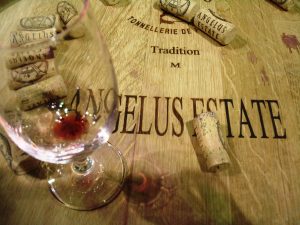
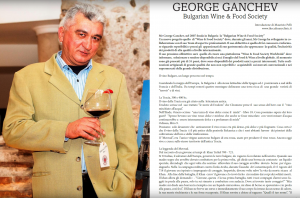
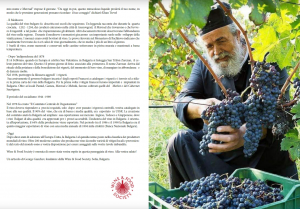

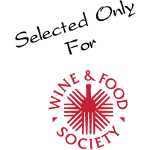

Recent Comments